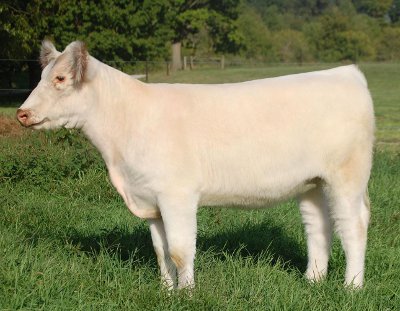Shorthorn Cattle
Category: Cattle - Cow

Facts about Shorthorn Cattle, Shorthorn Cattle did originate in the Tees River Valley of the north-east England, previously known as Teeswater and was highly noted for its quality beef. The breeders in Scotland did select animals with increased compactness, and the ability to fatten and mature at an early age, producing the modern Shorthorn Cattle breed. The Shorthorn Cattle breed has various strains including Poll Shorthorn, Durham, Beef Shorthorn, Australian Shorthorn, and the Dairy Shorthorn. "Fear of cattle Bovinophobia". "Scientific name for cattle Bovine".
Description
Shorthorn Cattle color coat varies from white to roan to red, but red and roan are the predominant colors. The Beef Shorthorn Cattle is much smaller in frame compared to the other strains of the breed. The Shorthorn Cattle are generally horned, but a polled breed is also available and they posses a moderate body frame with rectangular shape and mature at an early stage
Characteristics
The Shorthorn Cattle breed is considered as an economic asset because they have high fertility rates, mature at an early age, produce sufficient milk and have good maternal qualities. The Shorthorn Cattle will calve easily, 98% of the time they will birth unassisted. The calves are hardy and achieve excellent yearling and weaning weights. It has high marbling traits and it can successfully be crossed with about any other breed. Crossbreeding will lead to increased calving ease, fertility, carcass quality, growth and docility.
Shorthorn cattle are excellent foragers.
Shorthorn has a good temperament and is a very easy breed to handle.
Health issues
Currently the Shorthorn Cattle is plagued by TH in a contained though popular bloodline. It’s important for you to note that this is not a genetic defect particularly in the Shorthorn Cattle. Tibial Hemimelia is a lethal genetic defect and new born cattle have twisted legs with fused joints, skull deformity, and large abdominal hernias. The Shorthorn Cattle usually don’t survive calving but should be destroyed if they manage past calving.
Diet
An open field with plenty of green pasture will suffice for Shorthorn Cattle diet. Without green pasture you can supplement the cattle with hay. When feeding on hay you will have to ensure that you also supplement the animal with proper minerals and salts. Breeds reared for beef purposes you will need to supplement with carbohydrates and protein feeds.
Water is essential for every Shorthorn Cattle; ensure you provide plenty of clean and fresh water on a daily basis. The Shorthorn Cattle’s consumption entirely depends on the weather conditions.
The Shorthorn Cattle breed has been used a cross he glob in the development of about 40 different breeds. It has desired qualities for both meat and dairy side.
Beef is consumed through out the world. Beef is eaten as roasts, steaks, and hamburgers. The other way it is used is meat by-products, this includes brains, intestines, horns, hides, diaphragm, heart, hoofs, hair, lips, snout, ears, bones and tongue. These meat by-products are used in many products that include margarine, dog food, makeup, chewing gum, marshmallows, shampoo, ice cream, gelatin, cement, chalk, and tennis racquets, fertilizer, piano keys, glues, wallpaper and strings for musical instruments. There are three different phases the way Beef is raised, the calves are raised on farm land and out in the pasture, used as feeder cattle they feed in the pasture on grass and crop residue. Finally the beef goes to troughs of feed, where the beef is fattened to be slaughter. The slaughterhouse is where the beef gets cut up and divided into different cuts, the (meat packer). This is were it is packed and sent to meat distributors where it goes to butchers and super markets.

 Back To Category Cattle - Cow
Back To Category Cattle - Cow